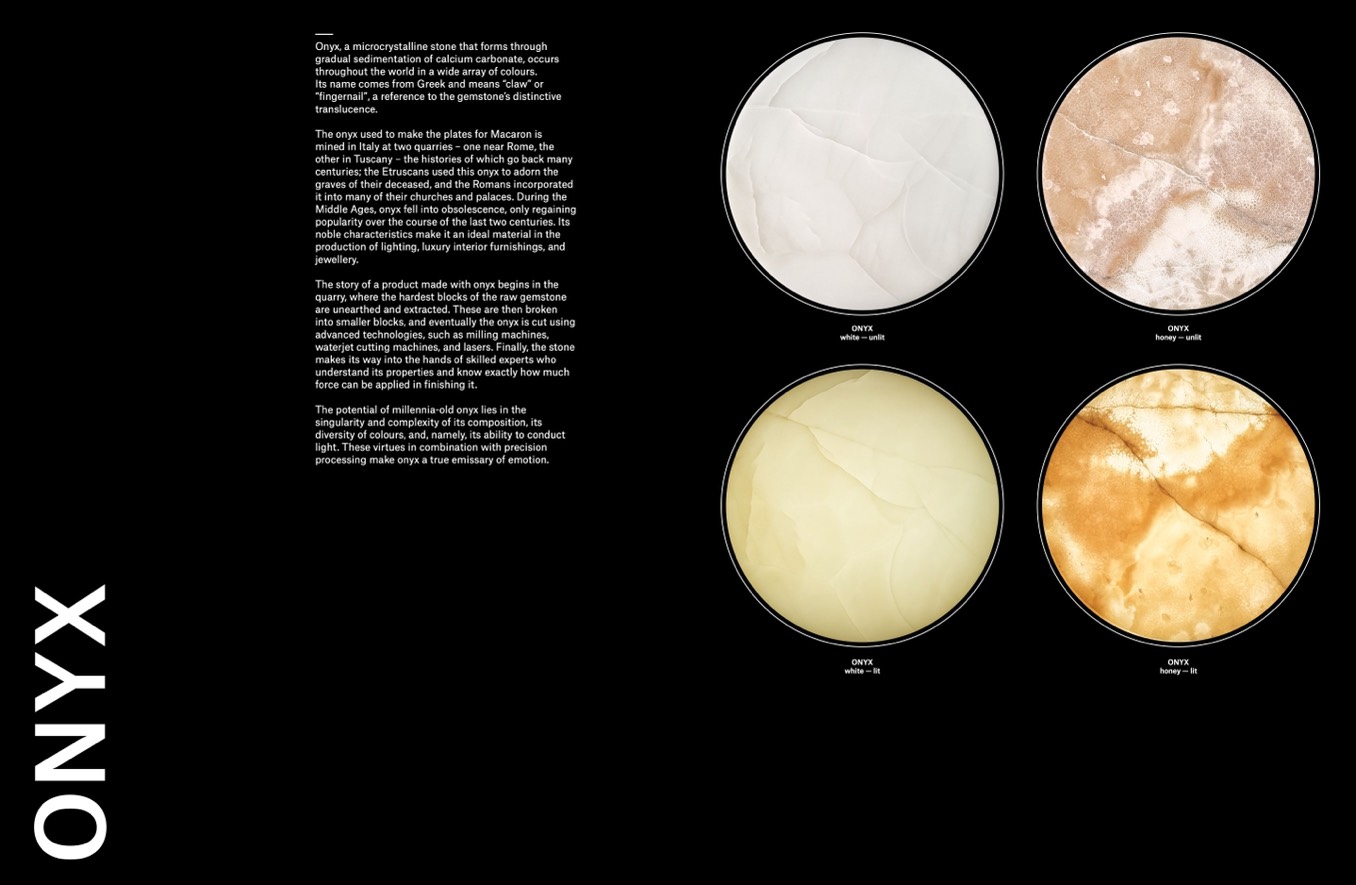
Onyx, a microcrystalline stone that forms through
gradual sedimentation of calcium carbonate, occurs
throughout the world in a wide array of colours.
Its name comes from Greek and means “claw” or
“fingernail”, a reference to the gemstone’s distinctive
translucence.
The onyx used to make the plates for Macaron is
mined in Italy at two quarries – one near Rome, the
other in Tuscany – the histories of which go back many
centuries; the Etruscans used this onyx to adorn the
graves of their deceased, and the Romans incorporated
it into many of their churches and palaces. During the
Middle Ages, onyx fell into obsolescence, only regaining
popularity over the course of the last two centuries. Its
noble characteristics make it an ideal material in the
production of lighting, luxury interior furnishings, and
jewellery.
The story of a product made with onyx begins in the
quarry, where the hardest blocks of the raw gemstone
are unearthed and extracted. These are then broken
into smaller blocks, and eventually the onyx is cut using
advanced technologies, such as milling machines,
waterjet cutting machines, and lasers. Finally, the stone
makes its way into the hands of skilled experts who
understand its properties and know exactly how much
force can be applied in finishing it.
The potential of millennia-old onyx lies in the
singularity and complexity of its composition, its
diversity of colours, and, namely, its ability to conduct
light. These virtues in combination with precision
processing make onyx a true emissary of emotion.
ONYX
white — unlit
ONYX
honey — unlit
ONYX
white — lit
ONYX
honey — lit
O
N
Y
X

